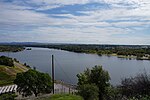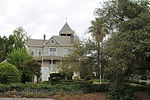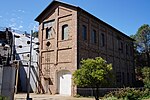Rancho Río de los Americanos
California ranchosRanchos of Sacramento County, California
Rancho Río de los Americanos was a 35,521-acre (143.75 km2) Mexican land grant in present-day Sacramento County, California given in 1844 by Governor Manuel Micheltorena to William Leidesdorff (1810–1848). The grant takes its name from Río de los Americanos, the name of the American River during the Mexican-rule era. The grant originally consisted of 8 square leagues and extended from the eastern border of John Sutter's New Helvetia (east of Sacramento) 4 leagues along the south bank of the American River, to the eastern end of present-day Folsom, and included present-day cities of Rancho Cordova and Folsom.
Excerpt from the Wikipedia article Rancho Río de los Americanos (License: CC BY-SA 3.0, Authors).Rancho Río de los Americanos
American River Bike Trail, Folsom
Geographical coordinates (GPS) Address Nearby Places Show on map
Geographical coordinates (GPS)
| Latitude | Longitude |
|---|---|
| N 38.67 ° | E -121.19 ° |
Address
American River Bike Trail
American River Bike Trail
95662 Folsom
California, United States
Open on Google Maps







